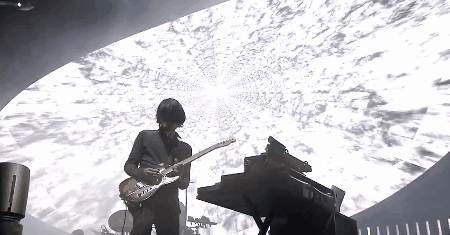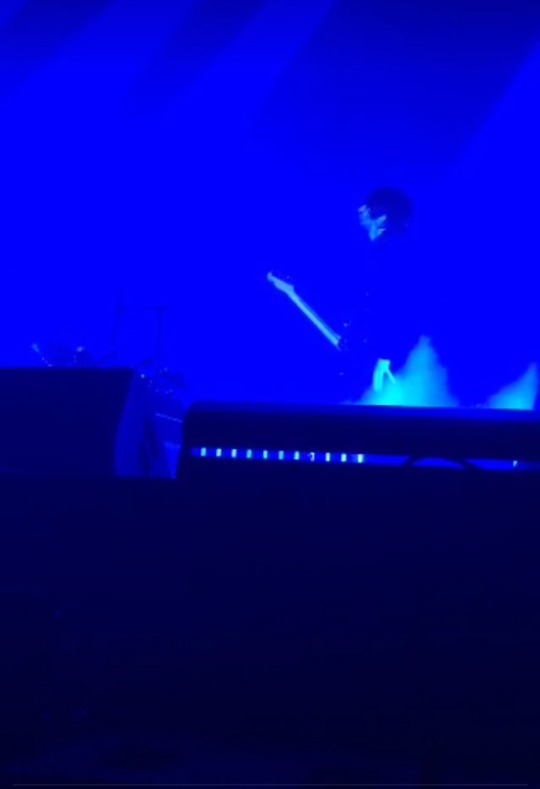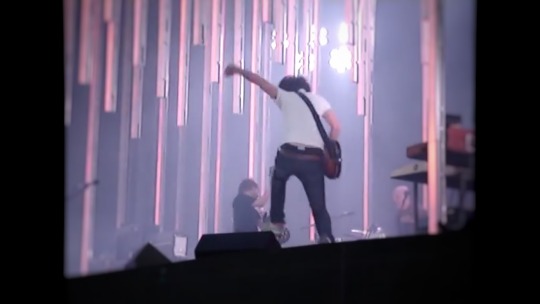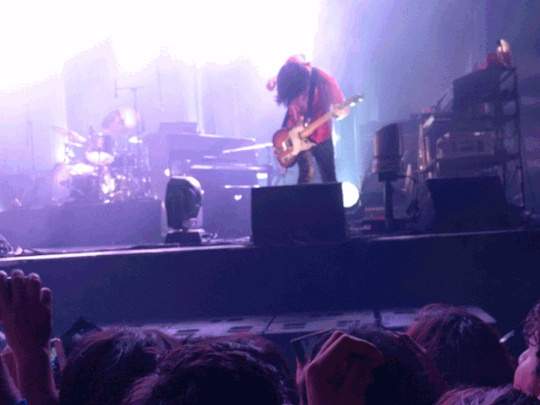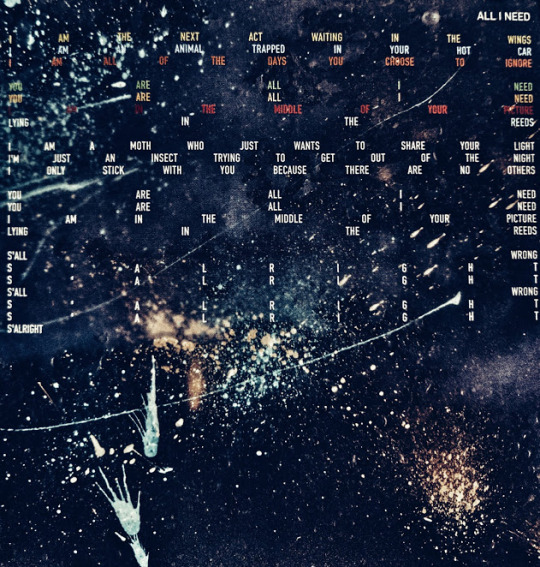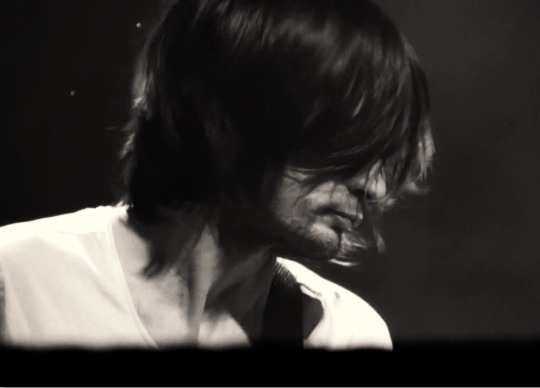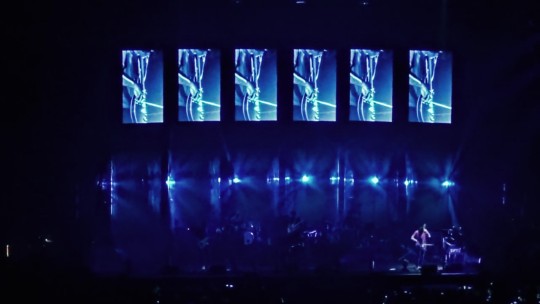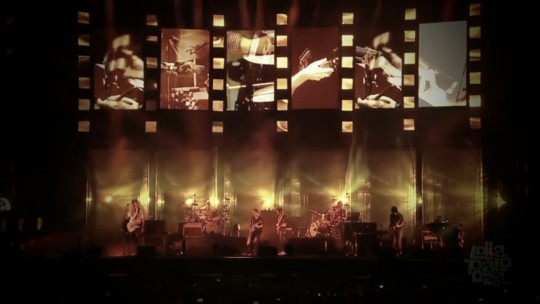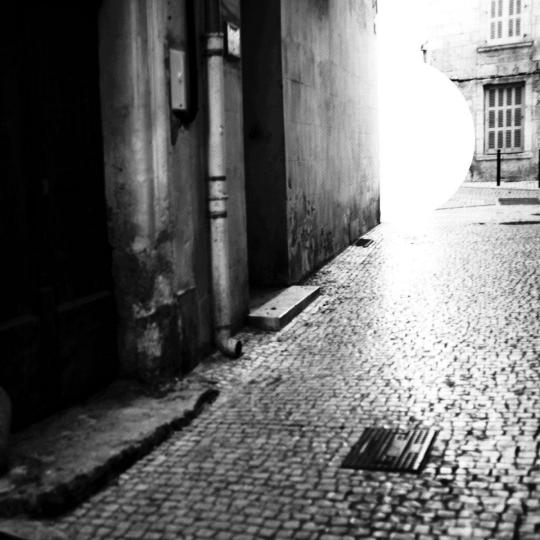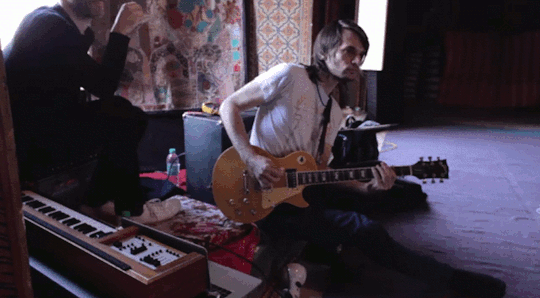Photo
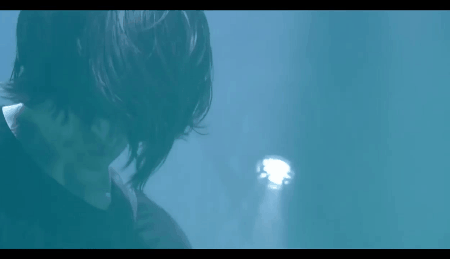
"thumbs up"
10 notes
·
View notes
Photo
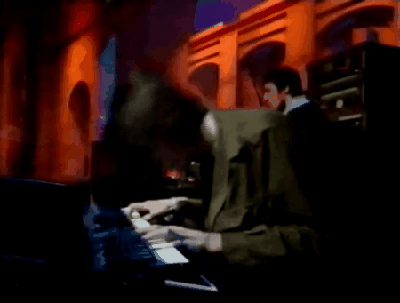
168 notes
·
View notes
Photo
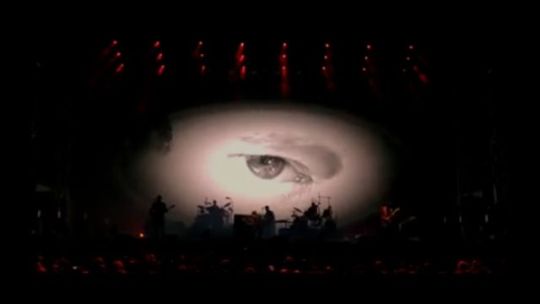
14 notes
·
View notes
Note
Hello! Do you know why Jonny favours the Akai Headrush as a looper/delay? I ask as I'm a guitarist looking for a loop pedal, and I wonder if the Headrush has any special features that are used in the context of Radiohead. Thanks for your work on this great blog!
Hello, happy that you like the site!
Jonny almost exclusively uses the Akai Headrush (E1 and E2) as a looper pedal.* What makes it excellent as a looper (ignoring the delay side of the pedal) is that it has no special features. It has no reverse effects, banks of saved loops, or built-in drum machines. It offers a simple, but extremely intuitive looper.
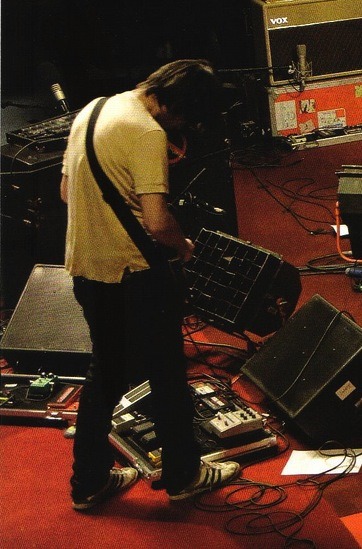
Jonny’s Headrush E1 can be seen in this photo from In Rainbows – From The Basement.
Half of this is simply that the Headrush has two foot switches. This makes it much faster to use than single-footswitch loopers, which require you to double tap and hold down the footswitch in order to stop or clear the loop. That can be very clumsy in a live setting. The dedicated play/stop footswitch on the Headrush makes live performance much easier (which is why most modern loopers have at least two footswitches).
The other half is the specific functions of the footswitches, the ‘record’ footswitch in particular. On basically every multi-footswitch looper pedal, when you hit the ‘record’ footswitch while you are recording a loop, it will end recording, begin playing the loop, and begin overdubbing. This configuration can definitely be useful, since one can more quickly build up layers. The issue with this configuration is that if you mess up while recording a loop, you need to end recording, stop the loop from playing back, then begin recording again. In a live situation, that can be a real pain.
With the Headrush, pressing the ‘record’ footswitch during recording will cause the pedal to clear its memory and restart recording. This configuring makes it extremely fast to move on from a mistake. Jonny has made very good use of this when performing his piece Loop. In this performance, you can see Jonny restart the initial loop three times before getting a good take, with barely a gap between each attempt.
Also, note that Jonny started using the Headrush in the early 2000′s, LONG before the proliferation of looper pedals which occurred over the past few years (courtesy of the Ditto). In general, once Jonny starts using a pedal it’s quite rare for him to switch to another which does the same thing - so it’s impossible to say whether he’d be using a Headrush if he went to buy a looper for the first time today.
So when Jonny wanted a looping effect, he found a pedal which does basic (!) looping in a very intuitive, live-friendly way, and hasn’t stopped using it since. If all that you need is basic looping, then the Headrush is an excellent choice. However, if you’re looking for more complex, song-building looping (see: Owen Pallett), or for more sound-modifying “effects” looping (like Ed’s on live performances of Little By Little or Ful Stop) you should probably look elsewhere.
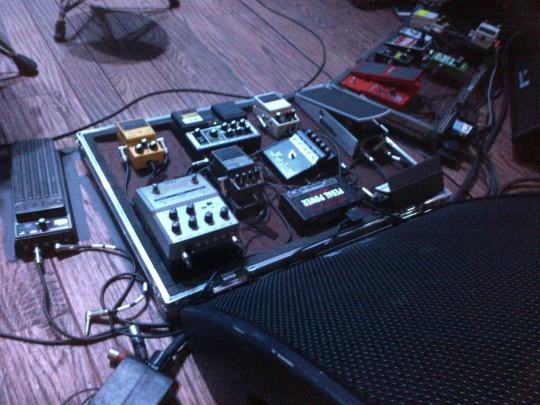
Jonny’s pedalboard at Radiohead’s 2012 performance on Austin City Limits. Note that Jonny only uses the mix output.
Here are some particularly cool examples of Jonny’s live looping:
15 Step – where Jonny records his playing on the first section, then triggers it while he plays a second part during the second section.
Weird Fishes – where Jonny loops a guitar part while his amp is muted (courtesy of Duncan), then lets it play back during the next section of the song.
Dil Ki Bahar – where, to create an evolving drone, Jonny first records a static drone of a chord with his EHX Freeze, then uses his Headrush to loop the sound of that drone as Jonny adjusts the delay time on a BOSS RE-20.
Loop – where a single loop repeats for the whole piece, with no overdubs, and is repeatedly harmonically re-interpreted (the 2015 Open’er Festival performance is a particularly good one, and like the Best kept Secret Festival performance shows the piece in better compositional maturity than was the case at the early 2014 performances).
*Jonny finds his RE-201 or, later, his RE-20 suitable for all of his delay needs, and has even referred to having only “one delay pedal”(npr).
28 notes
·
View notes
Photo
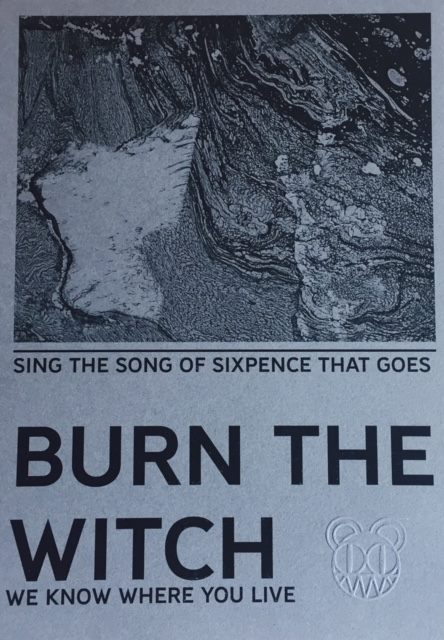
some people received mysterious leaflets from the band today… (*thanks to Cloog M Davidoff)
57 notes
·
View notes
